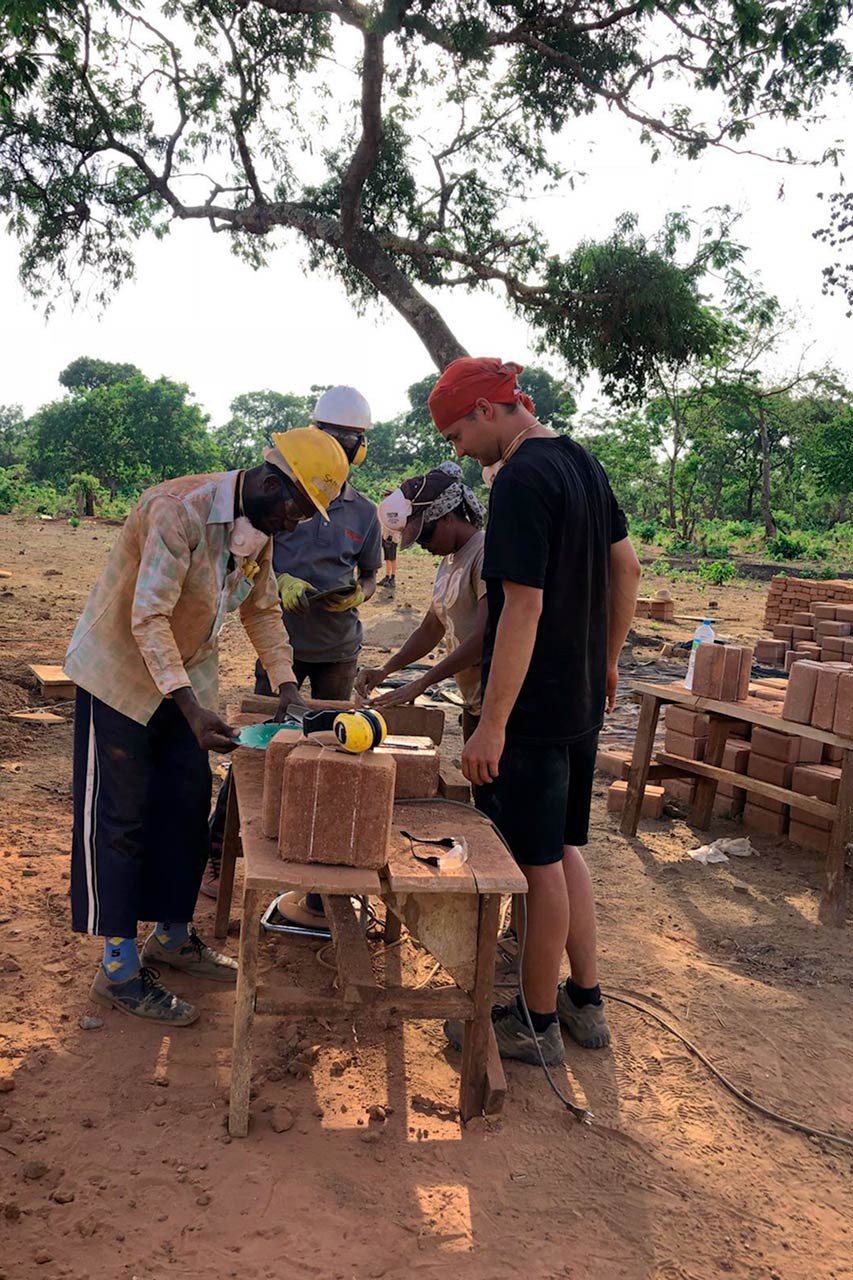School buildings, Santiguyah, Guinea

The joint "Design-Build-Program" of the Düsseldorf University of Applied Sciences / Peter Behrens School of Arts and the Chair of Building Design at the RWTH Aachen University combines the mostly theoretical academic curriculum with practical instruction in a new approach to studies and research: Bachelor and Master students put their ideas into practice. The cooperation of different universities, vocational schools and educational/cultural institutions supports the concept "Build together - Learn together".
Under the country's government, West African Guinea was cut off from the outside world until 1987, and even today much is still missing in everyday life, such as electricity, running water, and health care. People in rural areas live mainly on the basic food they grow themselves and have hardly any opportunities for education: about 70 % of the rural population is illiterate.
MEN-A, Guinea's Ministry of Education, and the German state development bank KfW have launched the "Guinea II Basic Education Program". To give children an educational opportunity, the school project was set up in the rural area of the Faranah region in the village of Santiguyah, a village with 300 inhabitants and about 10 other villages in the surrounding area. There is no electricity and water comes from a public well.
After one year of planning, construction began in January 2019 in several phases during the semester break. About 70 students from Germany and Guinea as well as young craftsmen were involved in the construction. The local vocational school "Centre de Formation Professionelle" and the German Münster Chamber of Crafts were also involved. Young trainees accompanied the students during the construction phases.
The goal is a campus with two school buildings and a total of six classrooms, two restrooms with water stations, a teachers' house as well as a soccer field and apartments for the teachers. About 300 children from eight villages will be able to attend school as soon as all buildings are completed.
Sturdy earth-cement blocks, which are produced in-house and processed without mortar, form the masonry, concrete bases protect them from monsoon rains.
In predominantly tropical weather conditions, cooling a building is of great importance. Therefore, a key element of the design is a sustainable, passive and natural ventilation system. The principle of using interaction of solar radiation and shading has already been proven elsewhere: the double roof.
In the case of the modules built here, smaller brick vaults form the lower roof. A steel girder construction rests on this. This is tinroofed with corrugated iron sheets which protect the vaulted roof from direct sunlight. The buildings are aligned crosswise to the prevailing wind direction, so that it supports the removal of warm air from the construction by convection. The long, rectangular school building provides classrooms and additional shaded outdoor space for teaching, leisure and communication.
Window openings are arranged on both sides of the classrooms and are equipped with adjustable lamella shutters. Depending on the heat and wind, they can be used to regulate how quickly an air stream enters the building and dissipates the accumulated warm air to the outside.
The water that flows over the roofs during the monsoon season is collected in tanks.
The dry toilets follow a two-chamber dehydration system typical of the country. The dried remains can be used to fertilize the school garden or the surrounding fields.
Financing: Study and Expert Fund V Guinea BMZ organized by KFW
Support: Sto Foundation, Karl Bröcker Foundation, Carl-Arthur-Pastor Foundation, Engagement Global and others.









